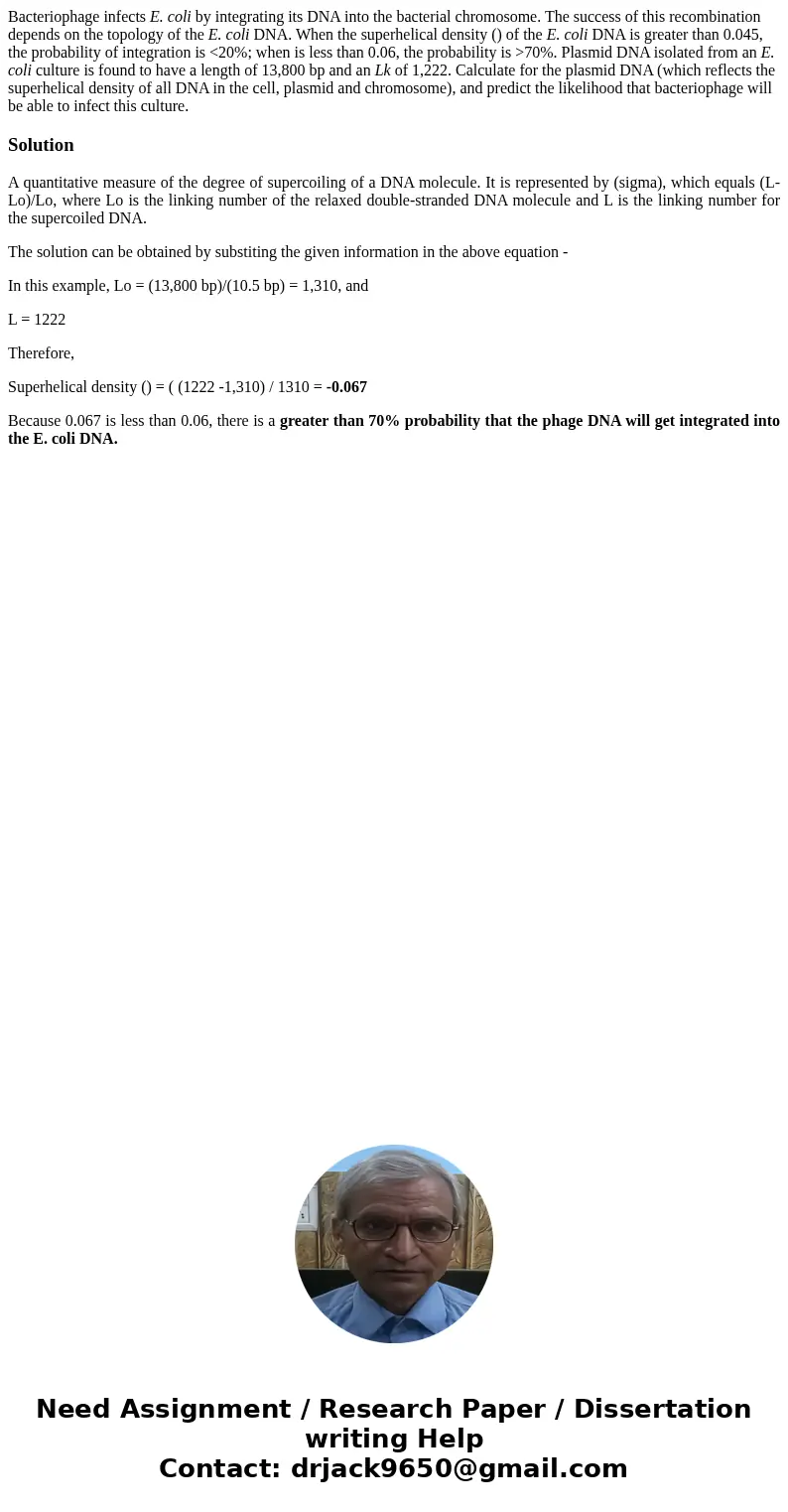Bacteriophage infects E coli by integrating its DNA into the
Bacteriophage infects E. coli by integrating its DNA into the bacterial chromosome. The success of this recombination depends on the topology of the E. coli DNA. When the superhelical density () of the E. coli DNA is greater than 0.045, the probability of integration is <20%; when is less than 0.06, the probability is >70%. Plasmid DNA isolated from an E. coli culture is found to have a length of 13,800 bp and an Lk of 1,222. Calculate for the plasmid DNA (which reflects the superhelical density of all DNA in the cell, plasmid and chromosome), and predict the likelihood that bacteriophage will be able to infect this culture.
Solution
A quantitative measure of the degree of supercoiling of a DNA molecule. It is represented by (sigma), which equals (L-Lo)/Lo, where Lo is the linking number of the relaxed double-stranded DNA molecule and L is the linking number for the supercoiled DNA.
The solution can be obtained by substiting the given information in the above equation -
In this example, Lo = (13,800 bp)/(10.5 bp) = 1,310, and
L = 1222
Therefore,
Superhelical density () = ( (1222 -1,310) / 1310 = -0.067
Because 0.067 is less than 0.06, there is a greater than 70% probability that the phage DNA will get integrated into the E. coli DNA.

 Homework Sourse
Homework Sourse